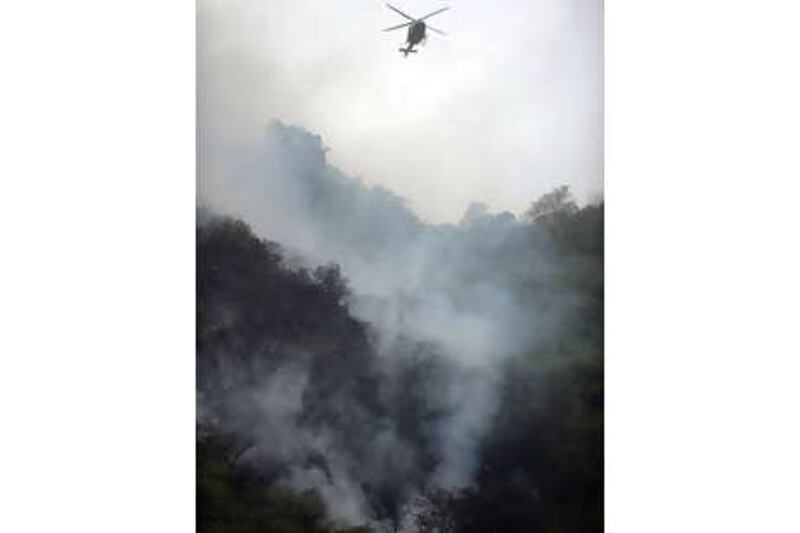A commercial Pakistani passenger plane with 152 people on board crashed in bad weather in hills near Islamabad, and police said they expected few had survived. At least 20 people were confirmed dead when the Airbus 321, belonging to private airline Airblue, crashed in heavy rain while flying from the southern port city of Karachi. Rescue efforts are continuing, officials said. Five survivors were pulled from the wreckage and sent to nearby hospitals, said Imtiaz Elahi, chairman of the state-run Capital Development Authority, a municipal body. The Pakistani government declared a day of national mourning and called off a cabinet meeting after the news of the crash. The country's prime minister, Yousuf Raza Gilani, and the cabinet "expressed grief and sorrow over the tragic incident" and offered prayers for passengers who were killed, Mr Gilani's office said in a statement. "The federal cabinet declared one day of national mourning. The prime minister called off the cabinet meeting until next week in the wake of this tragic incident," it added. Rescuers said they had to dig through the rubble with their bare hands, with fire and thick smoke hampering their work. The crash site, on a steep and heavily wooded hill, has no roads, limiting access to pedestrians and aircraft. "Dead bodies are lying all around and very few might have survived in the accident," Bin Yameen, a senior police official of Islamabad said. "Bodies are being lifted through helicopters." The plane lost contact with the control room of the Islamabad International Airport at 4.43am GMT. It was carrying 146 passengers and six crew members. Bin Yameen said a woman was alive at the scene and crying for help. "I could hear her cries from the woods. Rescue workers are trying to save her," he said from the scene of the crash. A thick blanket of cloud and smoke caused by fire could be seen rising from the crash site. A helicopter hovered overhead and flames licked at trees and what appeared to be wreckage from the plane, television pictures showed. "We are removing wreckage with our hands. There is fire. There's smoke, which has made the rescue job very difficult," Bin Yameen said. The crash site is on the Margalla Hills facing Islamabad, about 300 metres up the side of the hills. Smoke was visible from some districts of the city, and crowds of onlookers lined the streets pointing and watching the smoke rise from the green hills. "It was raining. I saw the plane flying very low from the window of my office," a witness Khadim Hussain said. Pakistan's AAJ television showed rescue workers making their way on foot to the crash site with some difficulty. A young man was weeping and being embraced by another man. The military said it had sent three helicopters to the site and troops had also been moved there. The prime minister Yusuf Raza Gilani ordered authorities to control the fire immediately and rescue passengers. There had been heavy monsoon rains in the area for at least a couple of days. Airblue began operations in 2004 with a fleet of Airbus A320 and A321 aircraft, the company said on its website (www.airblue.com). Spokesman Raheel Ahmed said this was the first crash for the airline. Airbus confirmed one of its planes was involved in the Airblue crash. "We regret to confirm there has been an accident with an Airbus aircraft and we will provide more information when we have more confirmed data available," said an Airbus spokesman Stefan Schaffrath. At Islamabad's international airport, passengers in the departure lounge scanned the television screens for news. "I'm not surprised something like this has happened," said Ahmed Fairuz, a passenger awaiting departure. "The weather is just too bad for flying." The A321 is the largest of the A320 family of single-aisle jets produced by EADS subsidiary Airbus. This particular type of aircraft, which can seat up to 185 passengers, has been in service since 1994. Forty-five people were killed when a passenger plane belonging to Pakistan International Airlines crashed near the central city of Multan in 2006.
* Agencies





